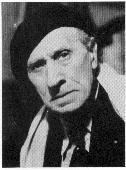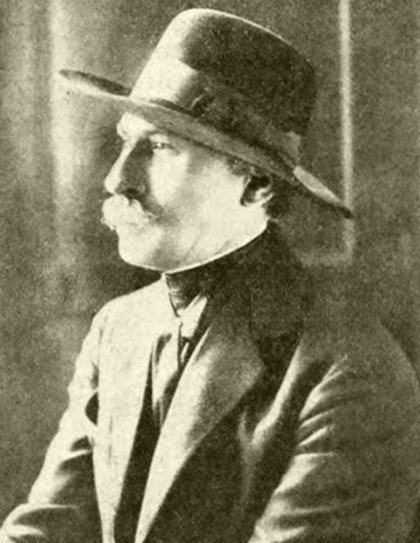Nationality French Education Lycee Louis-le-Grand Role Poet | Name Paul Fort Alma mater Lycee Louis-le-Grand | |
 | ||
Born February 1, 1872Reims, France ( 1872-02-01 ) Occupation Lecturer, poet, playwright Notable awards Prix Lasserre (1936)Grand Prix de Litterature (1956)Chevalier, French Legion d'Honneur Died April 20, 1960, Montlhery, France Books Ballades du beau hasard, Selected Poems And Ballads Of Paul Fort | ||
Matthias dandois fait une d monstration de bmx au coll ge paul fort
Paul Fort (1 February 1872 – 20 April 1960) was a French poet associated with the Symbolist movement. At the age of 18, reacting against the Naturalistic theatre, Fort founded the Théâtre d'Art (1890–93). He also founded and edited the literary reviews Livre d'Art with Alfred Jarry and Vers et Prose (1905–14) with poet Guillaume Apollinaire, which published the work of Paul Valéry and other important Symbolist writers. Fort is notable for his enormous volume of poetry, having published more than thirty volumes of ballads and, according to Amy Lowell for creating the polyphonic prose form in his 'Ballades francaises' .
Contents
- Matthias dandois fait une d monstration de bmx au coll ge paul fort
- CAPLET CINQ BALLADES FRANCAISES DE PAUL FORT French art songs
- Life and career
- Theater Experience
- Post war creation
- The Poet Laureate of the Third Republic
- Trivia
- References

CAPLET | CINQ BALLADES FRANCAISES DE PAUL FORT | French art songs
Life and career

Born in Reims, Marne département, France, he became an important part of the artistic community of Montparnasse. While a student at the Lycée Louis-le-Grand in Paris, he founded the Théâtre d' Art in 1890. Many new artists were promoted there, including Paul Verlaine, Paul Gauguin, and Maurice Maeterlinck. By 1912 his accomplishments and influence were such that Verlaine gave him the title "Prince of the Poets."
One of his famous works was "La Ronde". This poem is famous worldwide because it is a plea for world friendship.
He died on 20 April 1960 in France and is buried in the Cimetière de Montlhéry, in Montlhéry, Essonne département, in the Île-de-France, Region of France.
Theater Experience
He frequented the café Voltaire, the headquarters of the Symbolist Poets breaking with the naturalistic scene including prevails Théâtre Libre created in 1887 by André Antoine in 1887, which caused his expulsion from high school.
Willing to offer a scene to Maurice Maeterlinck, who he admired in drama, he created in 1889, with Lugné-Poe, the Art Theater that became the Théâtre Libre. The theatre introduced the works of Henrik Ibsen and August Strindberg to the French public.
Post-war creation
The theatrical adventure he had achieved, he dedicated his life to poetry. He gave his first poems to the Mercure de France in 1896. Those poems consisted the debut of the Ballades françaises (17 volumes written entering 1922 and 1958). He begins to publish into the Le Livre d'art magazine in 1892 where it was relaunched in 1896 with Maurice Dumont. With the latter, he edited L'épreuve, Journal-Album d'art in 1894.
By 1903 he organized and held Tuesday poetic lectures at the Closerie des Lilas. In 1905, he began publishing the magazine Vers et prose with Moréas and Salmon, who notably edited the works Guillaume Apollinaire, Max Jacob, Pierre Louÿs. He edited it together with Paul Valéry. Pierre Louÿs, who wrote the prelude to the first volume of the Ballades, defines them as small poems in polymorphous form or in familiar alexandrins, but which bend towards the normal prose form, requiring the rules of rhythmic prose rather than those of verse diction.
Given the title “commandeur de la Légion d'honneur”, he helped to give the quartier du Montparnasse in Paris its artistic reputation. A poll of five literary magazines (Gil Blas, Comoedia, La Phalange, Les Loups and Les Nouvelles) gave him the title "Prince of Poets" in 1912. Then, 350 authors voted him as the true heir to Verlaine, Mallarmé and Léon Dierx.
In August 1913, his sixteen-year-old daughter Jeanne married futurist painter Gino Severini. Fort lead the ceremonies, Severini had as witnesses Guillaume Apollinaire, and Filippo Marinetti, the author of the Futurist Manifesto. Apollinaire wrote to Madeleine Pagès two years later: “I received the idiotic lyrical report of Paul Fort, the highfalutin prince of poets, who sings to battles in far away lands in a truly foolish language.”
The Poet Laureate of the Third Republic
Paul Fort was a leading jury member of the Prix Jeunesse that was created in 1934. Running in 1943 for the Académie Goncourt seat left vacant by the death of Pierre Champion a year earlier, Fort lost to André Billy, though Billy was confirmed to the seat only after the Libération.
His work was banned by the CNE (National Writers' Committee of the intellectual resistance) at the end of war, but the interdiction was rescinded in a second list published in the Les Lettres françaises of 21 October 1944.
But he officially recovered when introducing an exhibition dedicated to him in 1954 at the Reims Carnegie Library.
In 1956, Paul married Germaine Pouget. His nephew married the daughter of Alfred Vallette (1858–1935), director of Mercure de France, and Marguerite Eymery (1860–1953), who wrote under the nom de plume Rachilde.
Paul Fort was buried at Montlhery on his own property, called Argenlieu.
Trivia
Fort was mentioned by Hemingway as a customer of Closerie des Lilas, in A Moveable Feast.
